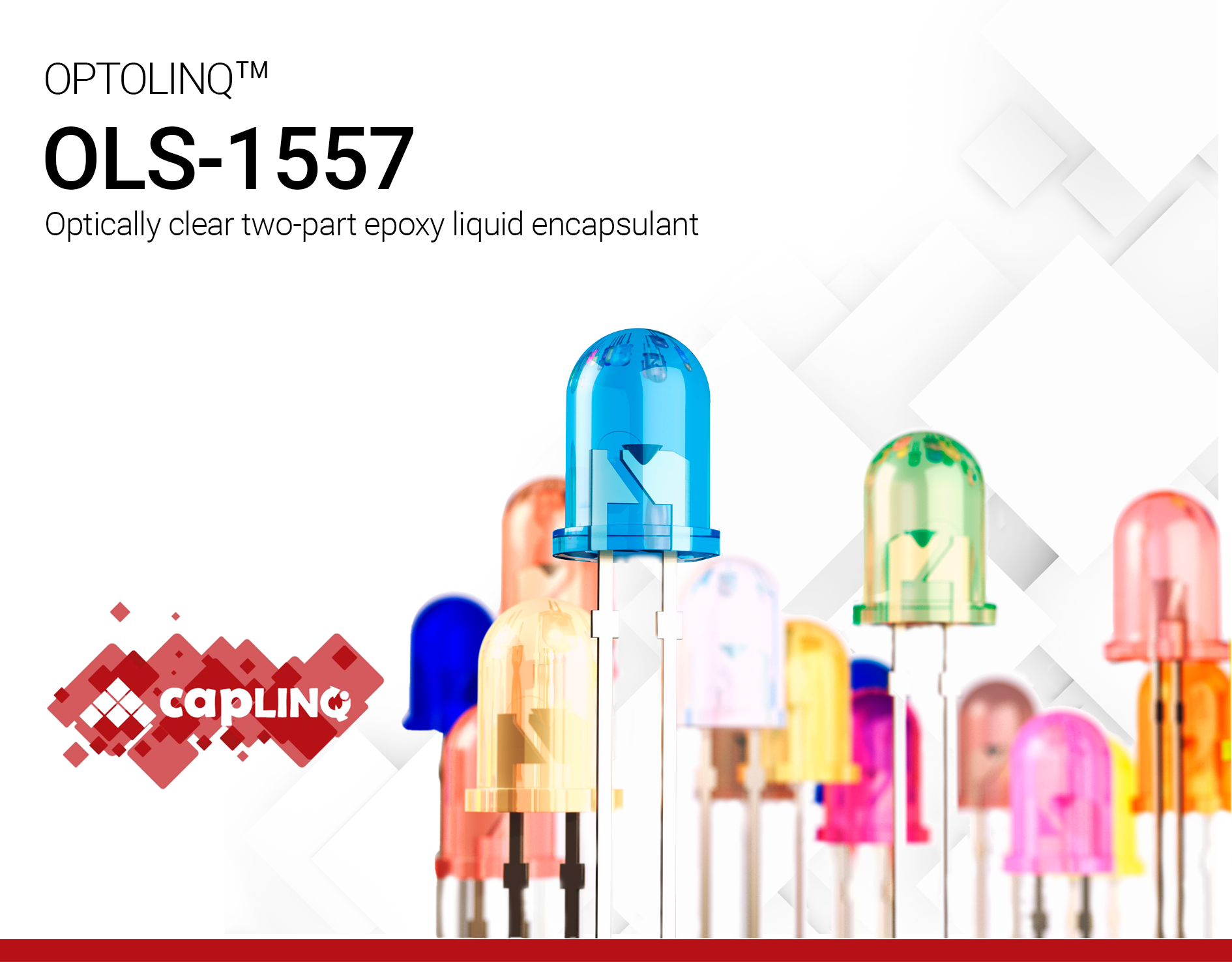OLS-1557 | Liquid Encapsulant - Two part Epoxy
- Low viscosity
- Good workability
- High temperature resistance
Product Description
OPTOLINQ OLS-1557 is an optically clear, two-part, and heat-curable epoxy resin. OLS-1557 AB mixture has low viscosity and good workability after mixing. When fully cured, the product demonstrates minimal mold shrinkage, high toughness, high-temperature resistance, good adhesion on different surfaces, and excellent electrical properties, making OLS-1557 an ideal material for the encapsulation of optoelectronic devices.
Technical Specifications
| General Properties | |||||
| Work life @25°C Work life @25°C Work life is the amount of time we have to work with a material until it is no longer able to be easily worked and applied on a substrate. It is based on the change in viscosity and it can rely on the application requirements. | 4 hours | ||||
| Chemical Properties | |||||
| Water Absorption | 0.3 % | ||||
| Thermal Properties | |||||
| |||||
| Glass Transition Temperature (Tg) Glass Transition Temperature (Tg) The glass transition temperature for organic adhesives is a temperature region where the polymers change from glassy and brittle to soft and rubbery. Increasing the temperature further continues the softening process as the viscosity drops too. Temperatures between the glass transition temperature and below the decomposition point of the adhesive are the best region for bonding. The glass-transition temperature Tg of a material characterizes the range of temperatures over which this glass transition occurs. | 81–91 °C | ||||
Additional Information
Processing Instructions
- Mix component A and B, stir uniformly, and degas under vacuum.
- Recommended molding curing conditions: Mold at 150 °C for 5 minutes and post-mold cure at 130–135 °C for 6–8 hours. Identify the specific curing settings based on your product requirements.
Using Additives
Optolinq OLS-1557 can be mixed with diffusing agents or color pastes to achieve customer-specific purposes.
Recommended quantity of various diffusing agents and color pastes:
- OPC-R Red Color Paste: 0.1-0.5% by epoxy weight
- OPC-B Blue Color Paste: 0.1-0.5% by epoxy weight
- OPC-G Green Color Paste: 0.1-0.5% by epoxy weight
- ODF-090 Diffusing Agent: 3-5% by weight (LED lamps), 4-8% (LED displays)
Storage and Handling
Store in a ventilated, dry, and clean environment below 30 °C and 70% RH. Keep away from fire and heat sources. It is strictly forbidden to store in outdoor environments. At proper storage conditions, Part A has a shelf life of 6 months and Part B a shelf life of 3 months. Shelf life can be extended by using cold storage.




